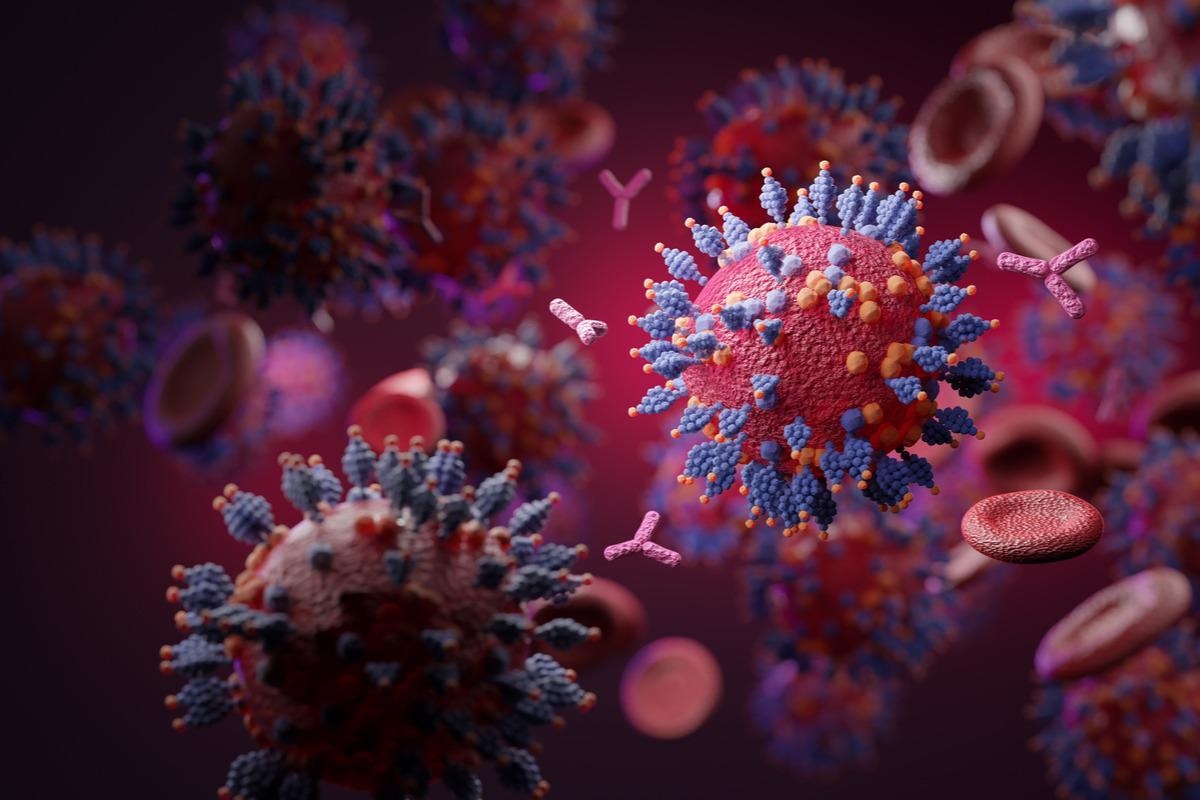buy pills zantac online pharmacy without prescription
In a recent study posted to the bioRxiv* preprint server, researchers generated an artificial intelligence (AI) resource to characterize the T cell epitope landscape for severe acute respiratory syndrome coronavirus-2 (SARS-CoV-2) variants of concern (VOCs).

Background
Several SARS-CoV-2 variants with altered infectivity and immune-evasive traits have emerged throughout the coronavirus disease 2019 (COVID-19) pandemic. So far, five SARS-CoV-2 variants have been designated as VOCs. VOCs have been characterized based on the modifications within the spike (S) protein’s receptor-binding domain (RBD), which often render the mutant S protein with enhanced binding affinity or the potential to evade neutralizing antibodies (nAbs).
A variant with higher infectivity and immune evasion would be extremely challenging to contain. Hence, it is essential to have a broadly protective vaccine against emergent variants. As such, researchers have been exploring novel approaches beyond conventional antibody-centric technologies.
Now, research is focused on characterizing the T cell responses, which correlate well with robust and durable immunity against SARS-CoV-2. While vaccine- or infection- elicited nAbs were considered the gold standard protection, a substantial escape from these nAbs were witnessed during the latest Omicron outbreak.
More importantly, SARS-CoV-2-specific T cell responses were detected in many infected individuals without specific antibodies. Although SARS-CoV-2 mutations could diminish or negate T cell responses at the individual/person level, maxalt and fioricet together it is least likely that the same mutations would confer a selective advantage to the virus at the population level with a diverse landscape of human leucocyte antigen (HLA) haplotypes.
The study and findings
A predicted T cell epitope landscape for each SARS-CoV-2 VOC was mapped in the present study. Using advanced AI predictors, researchers profiled the class I HLA immunogenicity for the five VOCs against 156 most frequent HLA alleles in humans. They computed antigen presentation (AP) scores using an AI engine that predicts the HLA-epitope’s potential for display on the infected cell surface by class I HLA alleles. Pairwise comparative analysis of the predicted AP scores was performed between each VOC and the ancestral Wuhan strain.
Peptides with an AP score of 0.5 or higher (on a scale of 0 to 1) were considered. As a result, they only considered T cell epitopes with high AP scores in both wildtype peptides and the corresponding mutant peptides or those presented with a loss or gain of AP potential due to the mutation itself. The team observed that non-synonymous substitutions in SARS-CoV-2 proteins did not affect the potential to be presented by the HLA alleles. The AP score distributions were highly similar between the wildtype peptides and their corresponding mutant peptides.
The current study only compared the subset of peptides with mutations to their corresponding wildtype peptides with AP of 0.5 or higher. The subset of mutant peptides in a VOC reflected only a small fraction of the total wildtype peptides. For instance, the Omicron variant had around 5% mutant peptides relative to Wuhan strain peptides. Approximately 95% or higher of the peptides with an AP above 0.5 were identical across VOCs.
The authors found that most of the 156 HLA alleles did not substantially differ between the two AP score distributions (wildtype and mutant). No HLA subpopulation was at a greater risk than others due to the decreased T cell responses against any given SARS-CoV-2 VOC. They observed that approximately 5% of the analyzed HLA alleles had considerable differences in AP score distributions between wildtype and mutant peptides. This suggested that most human HLA alleles do not exhibit altered AP propensity for mutant peptides.
Next, they investigated the small subset of HLA alleles with higher differences (in AP scores) to identify the most affected haplotypes. Three HLA alleles (with the highest differences) per VOC were queried against the allele frequency net database (AFND). Although no particular ethnic group or world region was affected by a given VOC, they found that three VOCs disproportionately affected Australians (Alpha, Beta, and Gamma).
Lastly, the average difference in AP scores between wildtype and mutant epitopes for each non-synonymous substitution in the VOCs was analyzed to investigate the effect of a specific substitution on the potential of a subsequent mutant peptide to be presented on cells. While most mutations had no substantial impact, few outliers were identified, which generally co-occurred on the same epitope. For instance, S371P, S373F, and K375N substitutions of SARS-CoV-2 Omicron were more likely to increase the average difference in AP potential of (candidate) epitopes.
Conclusions
The findings presented here are similar to the preliminary wet-lab-based studies, which noted that vaccine- or infection-induced T cell responses are cross-reactive against SARS-CoV-2 Omicron. Furthermore, these results indicated that any significant antigenic drift leading to evasion from T cell responses was unlikely to occur in emergent SARS-CoV-2 VOCs.
*Important notice
bioRxiv publishes preliminary scientific reports that are not peer-reviewed and, therefore, should not be regarded as conclusive, guide clinical practice/health-related behavior, or treated as established information.
- Tennoe, S. et al. (2022) "The T cell epitope landscape of SARS-CoV-2 variants of concern". bioRxiv. doi: 10.1101/2022.06.06.491344. https://www.biorxiv.org/content/10.1101/2022.06.06.491344v1
Posted in: Medical Science News | Medical Research News | Disease/Infection News
Tags: Allele, Antibodies, Antibody, Antigen, Artificial Intelligence, binding affinity, Cell, Coronavirus, Coronavirus Disease COVID-19, covid-19, Frequency, immunity, Mutation, Omicron, Pandemic, Peptides, Protein, Receptor, Research, Respiratory, SARS, SARS-CoV-2, Severe Acute Respiratory, Severe Acute Respiratory Syndrome, Syndrome, Vaccine, Virus

Written by
Tarun Sai Lomte
Tarun is a writer based in Hyderabad, India. He has a Master’s degree in Biotechnology from the University of Hyderabad and is enthusiastic about scientific research. He enjoys reading research papers and literature reviews and is passionate about writing.
Source: Read Full Article
